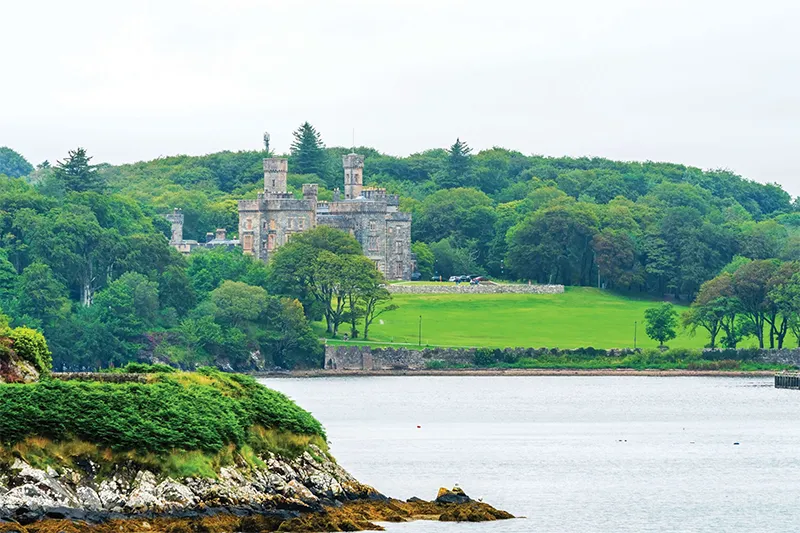The cruise world is slowly turning greener, attracting those who consider themselves more environmentally conscious. However, it’s led to an industry-wide debate – can ships be renovated and upcycled without having to order a brand-new leviathan? Calum Brown looks for the answers.
Remember the Toyota Prius? Japan’s hybrid family car was supposedly designed to massage the trees and save the earth. Drivers believed the battery-petrol-composite was akin to automotive Jesus, and if you didn’t opt to purchase one then Mother Nature would destroy us all.
If you owned an older car, you had to adapt or be judged. Now, a similar train of thought is creeping across the cruise industry.
There’s a polarising vibe where older cruise ships become easy targets, with people brandishing their opinions and spearheading a notion that freshly constructed cruise ships are kinder to the environment and older vessels remain akin to poison.
Others point to research that showcases how new ships use vast amounts of resources, harming the atmosphere. Renovating an older vessel, they claim, saves all that mayhem and pollution.
Prolonging the lifespan of a ship that’s already been created and installing a modern emissions-conscious powerplant to match contemporary regulations therefore makes perfect sense. It’s the best of both worlds, it might be said. So – what’s the deal?
Green cruise ‘no longer an oxymoron’
The phrase green cruising has long been seen as an oxymoron, but that’s only the case when judging the book by its cover.
In the past, the cruise industry has been lampooned by environmentalists as a cacophony of habitat-abusing toxins and bad attitudes. Cruise lines have been pushed into cleaning up their act courtesy of a changing world, fronted by studies from Friends of the Earth.
Announcing a ban on plastic straws and following baseline sustainability practices isn’t enough to appease those concerned with climate change anymore. Aggressive decarbonisation goals, cleaner alternative fuels, greener port-based infrastructures and technological advancement remain the order of the day.
According to the likes of UN research, only ships built to modern regulations can possibly achieve those targets. Keyboard warriors and inconsequential socialites may get carried along by that argument, but is it one big misconception?
Could it not be argued that all those voices that sneer and mock the decision to keep an older vessel up-to-date completely misinterpret society’s infatuation with “new is greener”?
Crafting a new vessel from the keel up is not just heavy on time and cost, but also on resources. More than 25,000 tonnes of steel are required for the construction of a mid-sized cruise ship, calling for more raw materials to be extracted from the earth.
Debunking stigma attached to cruise ship renovation
Upcycling used to be a dirty word but, thanks to efforts from the likes of Ambassador Cruise Line, the term has enjoyed a renaissance. Start-up cruise lines over the past century typically renovated older ships to avoid large financial outlays, but there was a stigma attached.
To capture paying guests who would book a cabin multiple times per year, ships had to be new or famously established. Perfectly useable liners became victims of society. Out with the old, and in with the new.
That was then, this is now, and the tourism landscape has shifted towards environmentally friendly holidaymakers. Repurposing a mature ship now presents merit rather than dishonour. Nick Hughes, chief operating officer at Ambassador Cruise Line, can attest to that.
He says: “Huge amounts of resources and materials go into a new build and we are very happy to reduce, reuse and recycle excellent existing ships and make them fit for modern emission standards.
“We know that our guests enjoy the size and layout of more traditional ships and these also give us great opportunities to visit a wider range of port destinations. Why use even more resources while there are excellent options already available?”
Then there’s the benefit of time scale. Crafting a cruise ship from scratch takes years of planning and construction. While Cunard’s Queen Mary 2 was officially ordered in November 2000, the maiden voyage wouldn’t occur until January 2004.
Ambassador’s revamped Ambition (originally built as MS Mistral in 1999) went from planning in May 2022 to her maiden voyage only one year later, cutting the schedule by almost 66 per cent.
Not to mention avoiding the subsequent carbon output of opting for a new build. Although it would be impolite to ask for exact figures, we reckon the cost of renovation was far less than ordering a fresh craft. When we asked Hughes, he simply responded: “Indeed”.
Ambassador ‘on track’ to meet carbon reduction goals
So, what about the big question – pollution? Repurposing is all well and good for the bank balance, but are these second-hand ships spewing excess toxins into the oceans?
“We are happy to report that we are on track to maintain a carbon intensity indicator rating of C for the next three years and that we have a good EEXI (Energy Efficiency Existing Ship Index) rating,” Hughes explains.
“We continue to work with the Norwegian Maritime Authority in reporting our NOx emissions and are comfortably meeting the Tier III emission requirements.”
Sewage treatment, maintenance and safety fall into the same argument. It’s societal nature to assume contemporary attributes cannot be achieved by anything built prior to new legislation, but that’s another misconception.
RWO, a supplier of intelligent water management solutions, worked with Celebrity Cruises to retrofit next-generation water treatment systems on Celebrity Silhouette and Celebrity Reflection – both more than a decade old.
The unique CS-MBR system employs submerged membranes and sustainable biological treatment technology to filter more than 99 per cent of solids, microplastics, viruses and bacteria from anything fed into the sea.
Royal Caribbean took a similar approach way back in 2009, installing advanced wastewater purification technology in the entire fleet. Carnival established a similar mantra when upgrading its global armada with contemporary energy-saving technology. Everyone is at it.
Concerns for safety and maintenance also enter a dead-end argument. All face-lifted ships trading between brands must meet strict and prudent regulations regarding flame-retardant textiles and lifeboat procedures, alongside austere and regulated maintenance schedules. Everything is legal, everything is safe and nothing detracts from the cruise experience.
What is cruise upcycling’s shelf life?
There’s one unanswered question regarding ocean-going upcycling. How long can it continue to adapt until ratification ensures that an older vessel doesn’t meet lawful regulations?
As world powers establish ever-tightening emission targets, it feels illogical to keep pouring money into a ship that can only be upscaled to a point, before serious powerplant upgrades amount to the financial equivalent of doomsday.
As anyone who understands the construction process of a cruise liner will understand, the ship is built around the engines, rather than installed once the hull has been constructed. It’s the only way to feasibly fit the colossal drivetrain without compromising the liner’s structural integrity.
As such, while those engines can be modified to run on better fuel, operate with modern exhaust systems and perform with up-to-date efficiencies, it’s a finite time before designs and fuel changes leave older engines behind. And it’s not as simple as removing one drivetrain for another.
That’s where the new ships come into play. You cannot run Windows 11 on a ZX Spectrum, and you cannot run a medium-speed MAN L58/64 nine- cylinder turbo-charged diesel engine on liquefied natural gas (LNG).
Cunard’s upcoming Queen Anne will propel herself with Caterpillar-MaK 12V43C units, which will provide bandwidth for further-reaching upgrades.
Taking a dose of future reality, it may sound unsporting to suggest that the current fleet of renovated cruise liners are sailing on borrowed time, but that doesn’t mean the ideology is unsound.
Upcycling an already manufactured product makes a tonne of sense, both financially and environmentally. Older ships can easily run alongside fresher constructions without societal prejudice. The dated outer aesthetics may not be to everyone’s taste, but the environmental argument has been debunked. Perhaps it’s time to move on to the next fad.
Earlier this year, Cruise Trade News deputy editor Gary Peters investigated the catalyst behind industry trends which suggest the cruise sector could soon surpass previous record passenger numbers.





